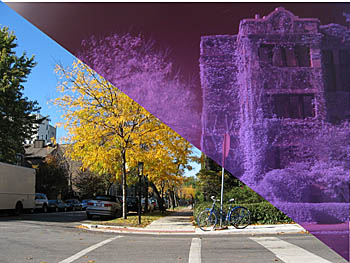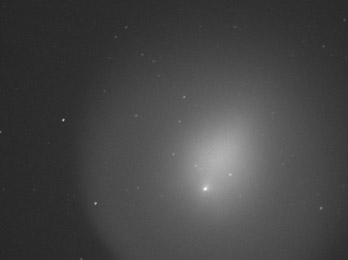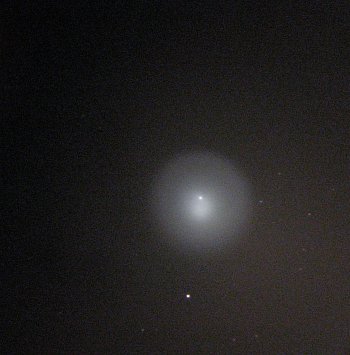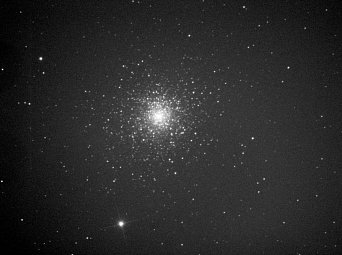This post is brought to you by the fact that I've been running a LiveCD version of the latest version of Ubuntu Linux on my home computer for the past week since my hard drive failed (which was running Windows XP). I did it because I wanted to be back up and running quickly, without having to replace the hard drive and reinstall Windows. A simple reboot with Ubuntu in the CD drive and I was back up and running. Most reading material is web based, and I use the built-in remote desktop application to access email on my work PC, so the only thing I've really lost is gaming, which I haven't had the time to do lately anyways. And besides, I have access to Desktop Tower Defense, so what gaming have I lost really?
And you know what? Ubuntu works. It works well. So much so that after putting a new hard drive in my home PC, I'm installing Ubuntu on it. I suppose I will set up a dual-boot system, or experiment with virtualization or a WINE Windows emulation system, but for the moment I am happy and established and most importantly, up and running, with a free OS that comes off of a CD.
My background with free OSes started a while ago, when I was a student employee at the Library. A fellow student employee who was overqualified for the job installed NetBSD on our then kick-ass Pentium 60 machine in the student/storeroom down in the subbasement of the Library. It offered two X window managers: gwm or twm; both were not ready for primetime. Things have come a long way since then (circa, uh, don't judge me on this, 1995).
I've been running Ubuntu as a server for testing purposes at work for over a year; the rough edges back then have been smoothed out (for instance, multi-CPU systems required a little extra to install, as well as setting screen resolution correctly); these things seem to have been correctly thought about in the latest version (7.10). At work I could access Windows file shares via Samba; I could offer up whatever I needed to via apache (http). But since I am a Windows System Administrator, the work portion of what I do was offered up via Windows 2003 Server and IIS 6. I have nothing really against Windows 2003--it's a fine OS, but IIS was up until 6.0 the crappiest web server around. It's a lot better now, but Apache works just as well, and I'm happy running both, although for me Apache is a test environment while work items run in IIS (because the vendor made it that way).
What really got me was the situation I was in: I had a bad hard drive, and I needed access to the web and my machine at work. The easiest solution was a CD with Ubuntu on it.
I think that Linux has arrived at the casual desktop, and it really works, and most hardware now works with it. I hope it's moved out of the enthusiast market and into the real world, where people don't necessary have the technical skills to replace the kernel or compile a program. I hope that people get fed up with infected and trojaned machines, and the monoculture of Windows gets diluted a bit with a more dynamic and robust computing environment. That's not to say I'm against Windows--after all, it gives me a paying job; but I like that I can recover from a hard drive failure with one CD and one reboot.
Thursday, November 29, 2007
Tuesday, November 20, 2007
infrared and visual split image

The Canon A540 does leak some near-infrared radiation through its IR blocking filter. I placed a two layer filter of exposed and developed color negative film in front of the camera for the infrared image.
1/2s at f/2.6 for the near-IR image.
1/400s at f/4.0 for the normal image.
That's about nine stops difference.
Link to the normal image
Link to the infrared image
P.S. Oh--here's a mouseover version.
Thursday, November 15, 2007
Friday, November 09, 2007
Incoming asteroid--errr, satellite
Astronomers at the Catalina Sky Survey near Tucson discovered an object on November 7th and when the orbit was calculated it was a Near Earth Object (or NEO) and would barely pass by Earth in only five days time. By barely, it was calculated at only a Earth's diameter away--a little under 8,000 miles.
Photometric measurements suggested the object was 20m in diameter, which is pretty big as things go--the Meteor Crater parent body was estimated at 30-50m.
But as Russian astronomer Denis Denisenko noted on the MPML, the object had a peculiar orbit: it passed quite close by Mars at nearly the same time as an ESA orbiter called Rosetta. See a view at Mars here. And, Rosetta happens to have the largest solar panels short of the ISS, two 14 meter long panels that make 64 square meters in total, matching the expected brightness of the object. Sure enough, Rosetta is due at Earth for a orbit changing interaction with Earth in five days so it can rendezvous with a comet in 2014. The people in charge of maintaining minor planet orbits decried the lack of coordination between the artificial satellite organizations and the minor planet community--as satellites are launched it's easy to watch them go away, but the NEO watchers are rightfully concerned about inbound objects, and the data about spacecraft outside of near-Earth space is skimpy.
Photometric measurements suggested the object was 20m in diameter, which is pretty big as things go--the Meteor Crater parent body was estimated at 30-50m.
But as Russian astronomer Denis Denisenko noted on the MPML, the object had a peculiar orbit: it passed quite close by Mars at nearly the same time as an ESA orbiter called Rosetta. See a view at Mars here. And, Rosetta happens to have the largest solar panels short of the ISS, two 14 meter long panels that make 64 square meters in total, matching the expected brightness of the object. Sure enough, Rosetta is due at Earth for a orbit changing interaction with Earth in five days so it can rendezvous with a comet in 2014. The people in charge of maintaining minor planet orbits decried the lack of coordination between the artificial satellite organizations and the minor planet community--as satellites are launched it's easy to watch them go away, but the NEO watchers are rightfully concerned about inbound objects, and the data about spacecraft outside of near-Earth space is skimpy.
Wednesday, November 07, 2007
Comet Holmes article in Tribune
Tooting my own horn.
. . . .Comet 17P/Holmes
Watch this . . . (well written Chicago Tribune story by Ryan Haggerty)
"It's certainly exciting," said Dean W. Armstrong, a member of the Ryerson Astronomical Society at the University of Chicago. Armstrong heard about the comet via e-mail. "It's much better than your average comet. To be able to see it in the city, to be able to see it with your own eyeballs without going out into the country is wonderful. It gives people a chance to reconnect to the night sky."
. . . .Comet 17P/Holmes
Watch this . . . (well written Chicago Tribune story by Ryan Haggerty)
"It's certainly exciting," said Dean W. Armstrong, a member of the Ryerson Astronomical Society at the University of Chicago. Armstrong heard about the comet via e-mail. "It's much better than your average comet. To be able to see it in the city, to be able to see it with your own eyeballs without going out into the country is wonderful. It gives people a chance to reconnect to the night sky."
Monday, November 05, 2007
Comet Holmes fainter tonight, 11/5
We fought with clouds tonight and bad seeing (and bad focus), but we all agreed the comet was larger and fainter tonight. The nucleus was too faint to see with our direct vision in the six-inch. The "blob" of material is taking on a more lenticular shape and the nucleus has some sort of trail extending from it.


Comet Holmes through the eyepiece
As I mentioned earlier, Comet 17P/Holmes is very bright. It's bright enough to point a regular digital camera into the eyepiece of a hundred-year-old telescope and get a reasonable image.

Comet Holmes on October 29th from Ryerson Observatory at the University of Chicago

Comet Holmes on October 29th from Ryerson Observatory at the University of Chicago
Thursday, November 01, 2007
Messier 15 from last night
We had a nice clear evening last night and took some photos over at Ryerson Observatory. I processed one last night real quick like. This globular cluster is M15, in the constellation Pegasus.

M15. 23x5seconds, 0.25m f.6, Starlight Express SXV-H9. Processed in Iris
We also took images of M2, M31 (Andromeda Galaxy), Comet Holmes, and Neptune (including Triton!), but I'll have to process those.

M15. 23x5seconds, 0.25m f.6, Starlight Express SXV-H9. Processed in Iris
We also took images of M2, M31 (Andromeda Galaxy), Comet Holmes, and Neptune (including Triton!), but I'll have to process those.
Subscribe to:
Posts (Atom)